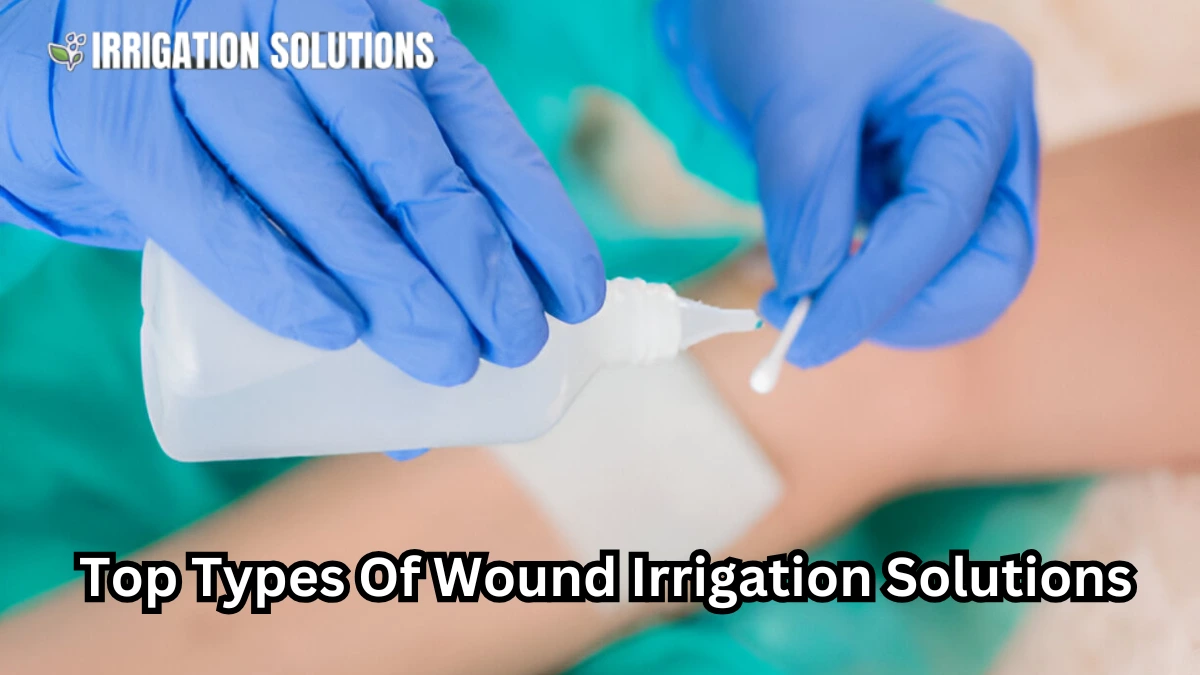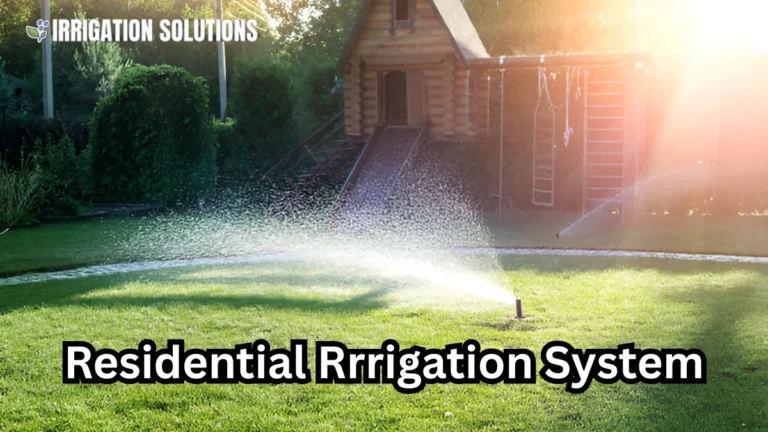top types of wound irrigation solutions

Wound care is a crucial part of healthcare, ensuring proper healing and minimizing complications like infection. One of the key components of effective wound care is irrigation, a process that helps clean and remove debris, bacteria, and dead tissue from a wound site. The types of wound irrigation solutions used plays a significant role in the success of the wound healing process. In this guide, we will explore various wound irrigation solutions, their uses, benefits, and considerations.
What is types of wound irrigation solutions?
Wound irrigation is a method used to clean a wound, typically involving the use of fluids to flush out contaminants and promote healing. This process not only removes debris but also prevents infection, reduces the risk of inflammation, and prepares the wound for further treatment such as dressing changes or medication application.
There are different types of wound irrigation solutions available, each suited for particular types of wounds, healing stages, and patient conditions. The choice of solution can impact the rate of healing, reduce infection risks, and minimize pain or discomfort for the patient.
Types of Wound Irrigation Solutions
When selecting the appropriate wound irrigation solution, healthcare providers consider factors like the type of wound, its severity, the patient’s condition, and any allergies or sensitivities they may have. Below are some of the most commonly used wound irrigation solutions.
Normal Saline Solution (0.9% NaCl)
Normal saline is one of the most widely used solutions for wound irrigation. It is a sterile solution of sodium chloride (salt) and water, with a concentration of 0.9%, which makes it isotonic to the body’s fluids.
Benefits:
- Non-irritating: It is gentle on the tissue and does not cause harm when used for cleansing.
- Widely available: Saline solution is readily accessible in hospitals and healthcare settings.
- Safe for use in all stages of wound healing: Saline is effective for cleaning both acute and chronic wounds.
- No toxicity: It does not cause adverse effects like cytotoxicity (which can harm living cells).
Best For:
- Acute and chronic wounds
- Surgical wounds
- Minor cuts, abrasions, and burns
- Chronic ulcers like diabetic foot ulcers
Antiseptic Solutions
Antiseptic solutions are often used when there is a concern about infection, as they contain substances that can kill or inhibit the growth of microorganisms. Some common antiseptic solutions include povidone iodine (Betadine), hydrogen peroxide, and chlorhexidine gluconate.
Povidone Iodine (Betadine)
This iodine based solution is commonly used for irrigation, especially in surgical wounds or abrasions. It has broad-spectrum antimicrobial properties.
Benefits:
- Kills bacteria, viruses, and fungi
- Widely available and effective in preventing infections
- Available in various strengths for different uses
Best For:
- Surgical wounds
- Skin infections
- Preoperative skin preparation
Drawbacks:
- Can cause irritation or allergic reactions in some patients
- May delay wound healing if used excessively or in high concentrations
Chlorhexidine Gluconate
Chlorhexidine gluconate is another popular antiseptic used for wound irrigation, known for its effectiveness against a wide range of bacteria.
Benefits:
- Broad spectrum antimicrobial activity
- Safe for use on a variety of wounds
- Ideal for long-term use in preventing infection
Best For:
- Chronic wounds
- Surgical wounds
- Prevention of healthcare-associated infections
Drawbacks:
- Can cause irritation in sensitive skin
- Prolonged use may delay wound healing
Hydrogen Peroxide
Hydrogen peroxide is another antiseptic that has long been used for wound care. It works by releasing oxygen when it comes into contact with tissue, helping to clean the wound by breaking down debris.
Benefits:
- Effective at cleaning wounds and removing debris
- Provides oxygen to the wound site, which can aid in healing
Best For:
- Cleaning superficial cuts, abrasions, and minor burns
- Reducing the risk of infection in fresh wounds
Drawbacks:
- Cytotoxicity: Can damage healthy cells if used in high concentrations
- Not suitable for deep or severe wounds
Ringer’s Lactate Solution
Ringer’s lactate is another isotonic solution similar to saline but contains additional electrolytes like potassium, calcium, and lactate. It is used in wound irrigation when rehydration and electrolyte balance are important considerations.
Benefits:
- Helps restore fluid and electrolyte balance
- Non-toxic to tissues
- Can promote healing by maintaining proper tissue hydration
Best For:
- Large, deep wounds or burns that require fluid replacement
- Wounds with significant tissue damage or dehydration
Sterile Water
Sterile water is another common solution used for wound irrigation. It is simply purified water that is free of contaminants and microorganisms.
Benefits:
- Gentle and non toxic to tissues
- Cost effective and readily available
Best For:
- Cleaning minor wounds
- As a base for other treatments or solutions
Drawbacks:
- Lacks antimicrobial properties, so it may not be ideal for preventing infections in contaminated wounds
Antibiotic Solutions
Antibiotic solutions, such as neomycin sulfate or gentamicin, are used to irrigate wounds that show signs of infection or those that have been contaminated.
Benefits:
- Provides localized infection control
- Targets specific bacteria without systemic side effects
Best For:
- Infected wounds
- Burns and surgical sites with high risk of infection
Drawbacks:
- May contribute to antibiotic resistance if overused
- Can cause allergic reactions in some patients
Non Cytotoxic Irrigation Solutions
Non cytotoxic irrigation solutions are designed to be safe for use on tissue without causing damage to healthy cells. These solutions are often used for chronic wounds, burns, and surgical sites that need gentle care.
Examples:
- Prontosan: A solution with surfactants that removes debris without harming healthy cells.
- Hypochlorous acid: A solution with natural antimicrobial properties, often used in chronic wounds and ulcers.
Benefits:
- Safe for use on delicate tissues
- Helps remove exudate and debris while maintaining wound healing
Best For:
- Chronic wounds like diabetic ulcers or pressure ulcers
- Post-surgical wound care
Drawbacks:
- Can be more expensive than traditional saline
- May not be necessary for all types of wounds
Key Considerations for Choosing the Right Solution
When selecting the appropriate irrigation solution, healthcare professionals take several factors into account:
- Wound Type: For example, saline is ideal for most acute wounds, while antiseptics may be necessary for infected wounds.
- Wound Stage: During the inflammatory phase, non-cytotoxic solutions like saline or Ringer’s lactate may be recommended. During the proliferative phase, solutions like Prontosan may support healing without damaging new tissue.
- Patient Sensitivities: Some patients may have allergies or sensitivities to specific solutions, such as iodine or chlorhexidine.
- Risk of Infection: For heavily contaminated wounds, antiseptic or antibiotic solutions may be preferred.
- Cost and Availability: Some solutions like saline are more affordable and widely available, while others may be reserved for specific cases.
Case Studies: Wound Irrigation in Practice
Case Study 1: Diabetic Foot Ulcer
A patient with a chronic diabetic foot ulcer presents for treatment. The wound is large and exudating significant amounts of fluid. The healthcare provider chooses a non-cytotoxic solution like Prontosan to clean the wound, as it is gentle yet effective at removing debris. The patient is also at risk of infection, so neomycin sulfate is used to irrigate the wound for targeted infection control.
Case Study 2: Post-Surgical Wound Care
After a surgical procedure, a patient’s wound is irrigated with normal saline to remove any potential contaminants. The wound is not infected, so no antiseptic solution is necessary. The healthcare provider opts for saline due to its gentle nature and low risk of complications.
Conclusion
Choosing the right wound irrigation solution is a critical step in wound care, helping to reduce the risk of infection and promoting faster healing. Normal saline, antiseptic solutions, Ringer’s lactate, and non cytotoxic solutions all have their place in wound management. By considering factors such as the type of wound, its severity, and the patient’s condition, healthcare professionals can make an informed decision to optimize healing outcomes.
Whether dealing with surgical wounds, chronic ulcers, or minor abrasions, the proper use of irrigation solutions can significantly impact patient recovery.






